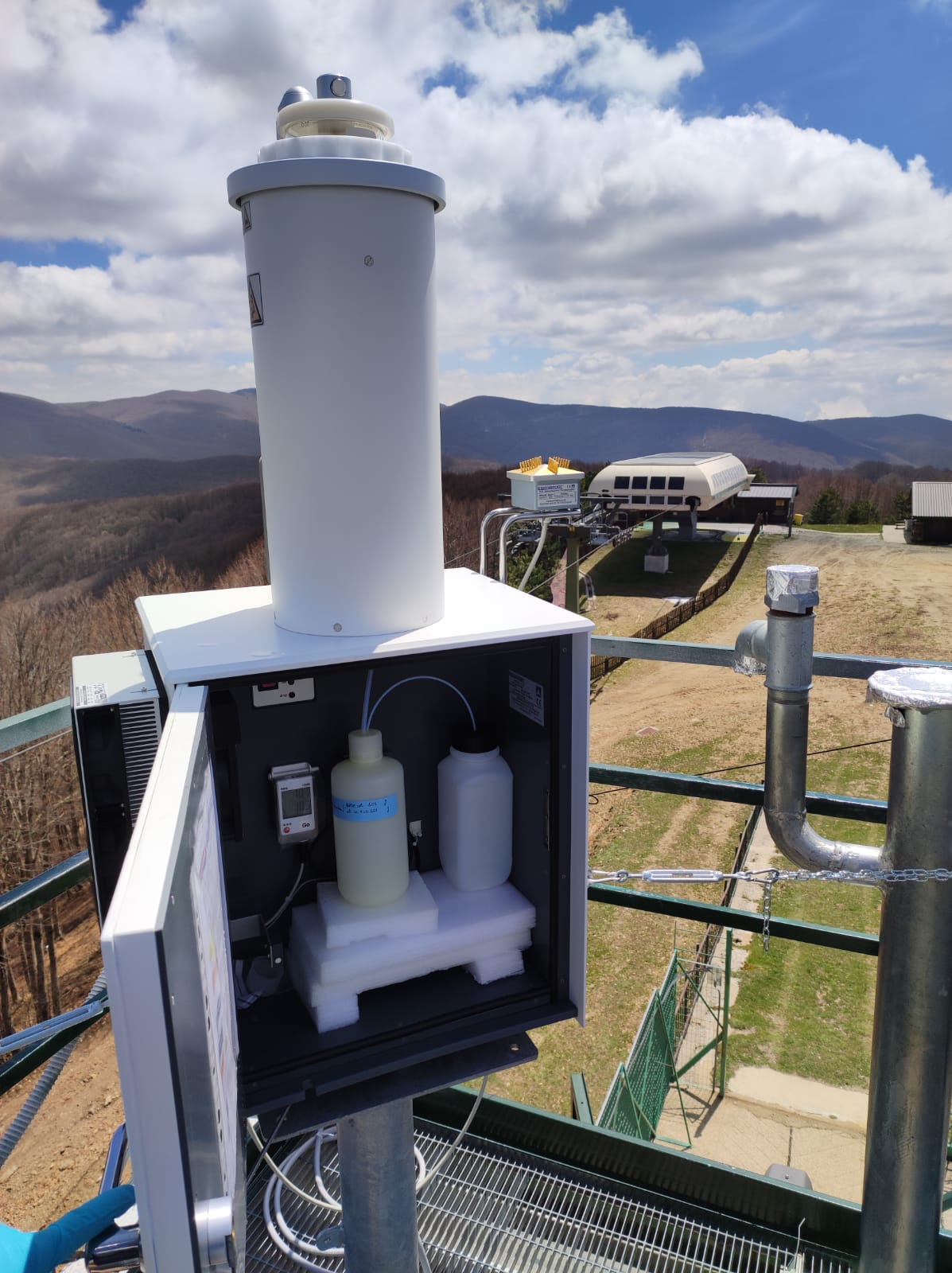
Sampling of wet depositions has begun at the Monte Curcio observatory for the determination of mercury
The Monte Curcio observatory, located at about 1800 m above sea level in the Sila Grande plateau (Calabria), carries out atmospheric monitoring activities within the Global Atmosphere Watch of the World Meteorological Organization (GAW-WMO) and represents one of the stations participating in the Global Mercury Observation System (GMOS) . In both cases, these are observational networks on a global scale, the first with the objective of assessing the overall state of “health” of the atmosphere through its chemical-physical characterisation, the second with a specific focus aimed at gaining knowledge about the presence and distribution of mercury in different environmental matrices.
Mercury is the only metal liquid at room temperature, with a shiny silvery-white color, hence its name “quicksilver”. It is an element naturally present in the Earth’s crust in the form of cinnabar mineral. Its dispersion in the environment has increased, following its greater use in various industrial applications as well as in various products, including some that were widely used until just a few years ago, such as thermometers or dental amalgam. An international treaty has been in force since 2017, to which Italy also adheres, which takes its name from the Japanese city, Minamata, where mercury poisoning was recognized for the first time. The purpose of the Minamata Convention is to reduce exposure to mercury by controlling and reducing the activities responsible for its greater release into the environment.
Due to the properties that characterize it, mercury has been recognized as a global pollutant, capable of producing significant negative effects on human health. Once released into the environment, it is subject to complex transformations which determine its redistribution between air, soil and water. In the atmosphere it is able to be transported for long distances, even depositing very far from the place of emission. Once it enters aquatic ecosystems, and transformed into organic form, it is subject to bioaccumulation and biomagnification along the trophic chain. In fact, the consumption of large fishes represents one of the main sources of exposure for humans.
In this context, the Institute of Atmospheric Pollution of the Italian National Research Council (CNR-IIA) has played a leadership role, both in Europe and internationally. In fact, it has coordinated numerous projects, as well as working groups in environmental conventions and programs, thus creating the conditions for building, and starting up in 2010, a network of monitoring stations on a global scale – the GMOS system – to detect the concentrations of mercury present in the atmosphere and in depositions.
Since its establishment in 2015, the Monte Curcio observatory has contributed to the GMOS network, initially providing measurements on the concentrations of total gaseous mercury (TGM) in the atmosphere, which were replaced by the integrated measurements of gaseous elemental mercury (GEM) and two other species present in the atmosphere, namely gaseous oxidized mercury (GOM) and mercury associated with fine particulate matter (PBM). Recently, the observatory has also been equipped with a suitable deposit meter for the collection of wet precipitation (rain and snow). The samples are collected at Monte Curcio and then analyzed in the laboratories of the CNR-IIA headquarters in Rende, following the standard protocols shared and adopted within the GMOS network and based on current European regulations.
The data relating to the measurements of mercury in wet depositions collected at Monte Curcio will coherently enrich the datasets acquired so far by the GMOS reference network, whose interpretation will be useful for a better understanding of the dynamics and processes that influence the transport and fate of mercury, both regionally and globally.
Monte Curcio Observatory
Coordinator Team
CNR-Institute of Atmospheric Pollution Research Division of Rende 87036, Rende, Italy
Nicola Pirrone:
nicola.pirrone@iia.cnr.it
Phone
+39 0984 493239 / 493213
